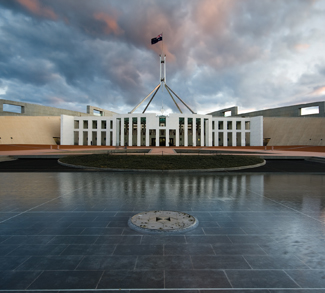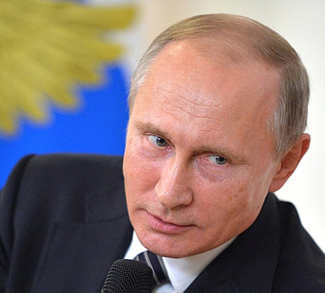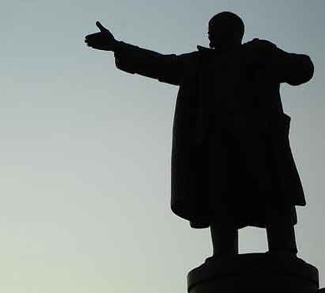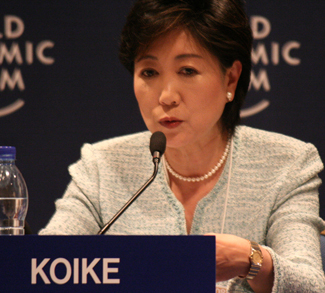After being prime minister for only around six weeks, Kevin Rudd called on the governor general to dissolve the Parliament for an election on September 7th. There is some irony in this date as Rudd, though running an almost traditional ‘new way’ opposition campaign similar to the one he ran against then-Prime Minister Howard in 2007, is at the head of a Labor government that has already had two terms in office.
It was only a short time ago it appeared an almost foregone conclusion that the Tony Abbott-led coalition would win the next election, decimating Labor to just a handful of seats in the process. But upon Rudd taking over the premiership from Julia Gillard, he very quickly gave the Australian people a sense of change by scrapping the carbon tax and making an announcement that no asylum seeker arriving by boat would ever be allowed to settle in Australia.
In addition, Rudd called the election on the on the same day that the Victorian Government agreed to school funding reforms, which appeared as a Liberal endorsement of Labor policy. On the first evening, Labor blasted the airwaves with a Sunday night media campaign and Rudd challenged the opposition leader to a televised debate every week of the campaign. Rudd forfeited the G20 meeting in St. Petersburg, which came as a surprise to many, trying to take the initiative and use it to his advantage. There was a sense of feeling within the Labor camp that no more electoral advantage could be gained by holding off the election any longer.
Tony Abbott’s immediate response was to let the Australian public know that he would not enter into any negotiations with independents to form a minority government, should there be a hung parliament. This signaled that the campaign would be squarely focused on the two leaders which their respective parties have put all their trust into. This could also be seen as an attempt to neutralize the large array of potential independents and minor parties that will participate in the election.
In this first week of the campaign the key issue has been that of credibility. Both camps have extolled their prowess as competent and responsible economic managers who are the best qualified to take Australia into the future.
The world is in an economic mess, where trends in Europe, China, and the US hint at another recession. And as Australia is a trading nation, it cannot escape the consequences of any world economic downturn, especially if China is also showing signs of a slowdown in growth. China saved Australia from a recession last time around in 2008, but 2014 will be different. With the mineral export boom vanishing and with potentially much lower commodity prices in the future, the major driver of Australia’s economic prosperity will be gone.
There are also many competitive issues concerning the domestic economy. Company operating costs are very high from a high tax regime and cumbersome compliance procedures, high labor rates outside normal working hours, labor shortages in some industries, a small domestic market which itself is not truly competitive, one that is also being dominated by a few major companies, and relatively low levels of economic activity as consumers aren’t overly willing to spend in the current environment. In addition, there is an increasing rate of unemployment, low economic diversity, and a high level of debt. Couple this with an aging population with growing funding requirements for aged care and health, serious consideration is needed about what the future of Australia should be like.
Australia may not just face a recession this time, but a deep structural recession that cannot be solved by manipulating interest rates and encouraging savings, spending, or investment through fiscal policies.
The fact is in the modern Australian economy of today that is open to the world, where critical decisions are decentralized with the Reserve Bank of Australia independently controlling monetary policy, and the elected government jointly with seven state or territory governments determining fiscal policy; Australia’s ability to guide its own structural economic evolution is very limited anyways.
Australia could be described as being up the proverbial river without any rudder or oars for that matter, helpless in determining the way ahead for the country. This is compounded with the transactional and reactionary approach to solving economic issues in the country. We accept the myth that budget deficits are undesirable, and that balanced budgets are prudent, even if the country must suffer for this. This is not advocating the reckless running of budget deficits, but rather advocating that the budget deficit is as much and economic tool as interest rates are. And so Australians are looking at the symptoms of our economic situation rather than the underlying causes and effects.
Abbott lowering corporate taxes by 1.5% for firms trading under $5 million per annum is not going to solve any structural problems. Is this going to encourage new activities requiring new skills and forms of competitiveness out in the world? Highly doubtful.
Although Abbott’s mention of developing Northern Australia and Rudd’s desire to find a replacement for mining began to broach some of the structural economic issues facing Australia, any new visions have quickly disappeared in this early part of the campaign. Effectively, the opportunity to put forward a new vision for the country has been deferred perhaps to a time when it will be too late to talk about. What has replaced this needed discussion is talk about who is better at stopping boat arrivals, who can spend less, who can solve the climate change problem through ‘book entries’, and who can be trusted with ‘the job of government,’
There is less bipartisanism today than there was in the past, government has less ability to manipulate the economy than ever before, and who wins government will most probably be decided more on personalities than any major policy choices.
So from this point of view, the 2013 federal election should be one of the watershed elections that decides Australia’s long term direction, but the opportunity is being wasted to the point where the election is not very important at all.
It looks like the decision of who will govern Australia after this election will come down to some 20 seats. This further reduces the 2013 election to a tactical one, rather than one where new major visions are expounded and leaders try and capture the imagination of the people. Rudd’s move to place popular ex-Queensland premier Peter Beattie as the candidate for the marginal coalition seat of Forde shows that this is a tactical election.
Watch the tally on election night in states like Victoria and the results may be confused with uneven swings where seats cross over to both parties, making any early result difficult to predict. Some states are showing swings to the coalition like Victoria, while Queensland and Western Australia are showing swings back to the Rudd government. Both leaders are playing for the same space and run the awful risk of appearing too similar. This is where the preferences of the Greens may actually determine the outcome of the election, although it’s most likely that the coalition may just get in. It will really depend upon which leader looks the most credible – so Rudd cannot not be written off by any means.
Perhaps the fact that major oil fields have been found in Australia will allow the ‘lucky country’ to continue to stumble along without the need to tackle any structural issues. Australia had the gold rushes, the wool boom, the minerals boom, and maybe the next boom will be an oil boom, negating the need for any real vision.
The opinions, beliefs, and viewpoints expressed by the authors are theirs alone and don’t reflect any official position of Geopoliticalmonitor.com.




